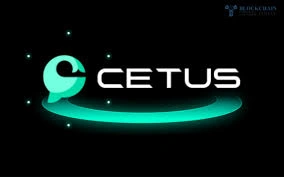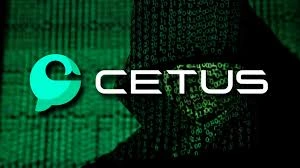Cetus Protocol (CETUS): Next-Gen Liquidity for DeFi Trading
Table of Contents

In the rapidly evolving world of decentralized finance (DeFi), Cetus Protocol stands out as a pioneering force. Operating on the high-throughput Sui and Aptos blockchains, Cetus introduces a Concentrated Liquidity Market Maker (CLMM) model, enhancing capital efficiency and offering advanced trading strategies. Central to this ecosystem is the CETUS token, a multi-utility asset designed to facilitate governance, staking, and transaction activities within the protocol. Whether you’re a liquidity provider, trader, or developer, understanding the role of CETUS Protocol is crucial to navigating the future of DeFi on these Move-based blockchains.
For more insights and updates on the latest trends in cryptocurrency, be sure to check out our Nifty Finances platform, which serves as your gateway to smarter financial decisions in the digital economy.

What is Cetus Protocol?
Cetus Protocol is a next-generation decentralized exchange (DEX) designed to provide efficient, permissionless trading and liquidity solutions within the rapidly evolving blockchain ecosystem. By leveraging cutting-edge technologies and innovative liquidity models, Cetus Protocol aims to deliver a secure, scalable, and developer-friendly platform for both traders and developers. At its core, Cetus combines the principles of decentralization with advanced financial mechanisms to optimize trading efficiency and enhance user experience.
Cetus Protocol is a decentralized exchange (DEX) and concentrated liquidity protocol designed to provide efficient and flexible trading solutions on the Sui and Aptos blockchains. It aims to simplify trading for all users and assets by offering deep liquidity and maximizing returns through its powerful DeFi tools.
- Concentrated Liquidity Market Maker (CLMM): Cetus Protocol utilizes a CLMM model, allowing liquidity providers to concentrate their capital within specific price ranges, enhancing capital efficiency and reducing slippage.
- Permissionless and Programmable: The protocol is permissionless, enabling anyone to create trading pairs and provide liquidity. Its programmable nature allows for the development of custom trading strategies and applications.
- Cross-Chain Interoperability: Built on the Sui and Aptos blockchains, Cetus Protocol facilitates seamless cross-chain trading and liquidity provision, expanding its reach across different ecosystems.
Decentralized Exchange (DEX)
The foundation of Cetus Protocol is its decentralized exchange, which allows users to perform permissionless token swaps and provide liquidity without intermediaries. By operating on a DEX model, Cetus Protocol ensures that participants retain full control over their assets while benefiting from transparent, on-chain transactions.
- Permissionless trading: Anyone can swap supported tokens without requiring approval or custodial accounts.
- Liquidity provision: Users can contribute assets to liquidity pools, earning fees in proportion to their contribution.
- Enhanced security: Smart contracts govern all transactions, reducing reliance on centralized entities and mitigating counterparty risk.
The decentralized approach fosters trustless interactions, making Cetus a reliable option for traders seeking efficiency and autonomy in token swaps.
Built on Sui and Aptos
Cetus Protocol is built on Sui and Aptos blockchains, both of which utilize the Move programming language. This choice of infrastructure provides several key advantages:
- Scalability: Move-based blockchains are optimized for high throughput, enabling rapid transaction processing even during periods of heavy network activity.
- Security: Sui and Aptos offer advanced security features, including formal verification and strong type safety, ensuring that smart contracts operate reliably and safely.
- Interoperability: By supporting multiple Move-language chains, Cetus Protocol facilitates cross-chain integrations and expands opportunities for developers and users.
This combination of scalable and secure blockchains underpins the platform’s ability to handle high-frequency trading and complex liquidity operations efficiently.
CLMM Model
A key innovation within Cetus Protocol is the Concentrated Liquidity Market Maker (CLMM) model. Unlike traditional AMMs, CLMM allows liquidity providers to concentrate their capital within specific price ranges, significantly improving capital efficiency.
- Improved returns: Liquidity providers can earn higher fees by targeting optimal price ranges for their assets.
- Reduced slippage: Traders benefit from more consistent pricing and tighter spreads.
- Optimized capital utilization: Assets are deployed where they are most likely to be used, enhancing overall pool efficiency.
The CLMM model positions Cetus Protocol as a highly competitive DEX capable of delivering both better returns for liquidity providers and a superior trading experience for users.
Developer-Friendly Environment
Cetus Protocol is also highly developer-friendly, providing SDKs and APIs that enable seamless integration of its liquidity and trading services into third-party applications.
- Integration flexibility: Developers can build wallets, trading platforms, or DeFi tools using Cetus Protocol liquidity pools.
- Comprehensive documentation: Cetus Protocol provides resources and guides to support rapid development and deployment.
- Community support: Active developer forums and collaboration opportunities encourage innovation and ecosystem growth.
By prioritizing developer accessibility, Cetus Protocol expands its reach beyond traders, fostering a broader ecosystem of applications and services built on its infrastructure.
Cetus Protocol represents a sophisticated evolution in decentralized finance, combining a robust DEX platform with advanced liquidity mechanisms, scalable Move-language blockchains, and developer-centric tools. Its concentrated liquidity model enhances capital efficiency, while Sui and Aptos integration ensures security and scalability. By offering permissionless trading, liquidity provision, and SDKs for developers, Cetus Protocol establishes itself as a flexible, efficient, and future-ready platform within the DeFi landscape, paving the way for more accessible and optimized decentralized trading solutions.

The Role of CETUS Token
The CETUS token serves as the cornerstone of the Cetus Protocol ecosystem, powering transactions, incentivizing participation, and enabling decentralized governance. As the native utility token of the platform, CETUS ensures that all ecosystem participants—traders, liquidity providers, developers, and governance participants—are aligned with the protocol’s long-term growth and operational sustainability. Its multi-faceted functionality positions CETUS as a critical component in the operation and expansion of the Cetus decentralized exchange (DEX).
Utility Token
At its core, CETUS functions as a utility token, facilitating a variety of essential activities within the Cetus ecosystem.
- Transaction medium: CETUS is used for transaction fees, enabling users to swap tokens, provide liquidity, and participate in other DeFi activities efficiently.
- Staking instrument: Users can stake CETUS tokens to earn rewards, contributing to network security and stability while benefiting from passive income.
- Incentive alignment: The token incentivizes positive participation across the platform, ensuring that both users and developers are motivated to contribute to ecosystem growth.
By integrating these core utilities, CETUS creates a self-reinforcing network effect, where token demand grows alongside ecosystem adoption.
Governance Participation
CETUS also functions as a governance token, giving holders a voice in the decision-making process for protocol upgrades and strategic direction. Decentralized governance ensures that the protocol evolves in a manner consistent with the community’s collective interests.
- Voting rights: CETUS holders can propose and vote on protocol changes, upgrades, and feature integrations.
- Decentralized oversight: Governance mechanisms prevent centralized control, promoting transparency and fairness in decision-making.
- Community-driven development: Active participation in governance encourages stakeholders to engage with the platform beyond simple trading activities.
Through governance participation, CETUS holders influence both short-term operations and long-term strategy, ensuring the protocol adapts to evolving market needs.
Staking Rewards
Staking CETUS tokens is a key method for both incentivizing participation and maintaining ecosystem security. Users who stake their tokens contribute to the overall health of the network while earning rewards in proportion to their commitment.
- Reward distribution: Staking rewards are distributed based on contribution size and duration, promoting long-term engagement.
- Network support: Staked tokens help stabilize liquidity pools and ensure smooth protocol operations.
- Enhanced governance: Staking aligns incentives, as participants who commit CETUS tokens are more likely to act in the network’s best interest.
Staking creates a positive feedback loop, fostering both liquidity and governance participation across the ecosystem.
Escrowed Governance (xCETUS)
CETUS introduces a unique mechanism known as xCETUS, which converts CETUS tokens into a non-transferable form specifically for governance purposes.
- Non-transferable voting power: xCETUS ensures that governance rights remain tied to long-term stakeholders, reducing speculative influence.
- Enhanced protocol security: By locking tokens for governance, xCETUS helps maintain network stability and integrity.
- Incentivized participation: Participants committed to long-term ecosystem success gain a direct influence over protocol decisions.
This mechanism reinforces a stable and community-aligned governance model, ensuring that decision-making reflects the interests of committed participants.
The CETUS token is far more than a simple digital asset—it is the economic and governance backbone of the Cetus Protocol ecosystem. By serving as a utility token for transactions and staking, enabling governance participation, and providing escrowed voting through xCETUS, it aligns incentives across all stakeholders while supporting the protocol’s security, liquidity, and long-term development. As Cetus continues to expand its DEX offerings and adopt innovative liquidity models, the CETUS token will remain central to ensuring sustainable growth, fostering community engagement, and enabling decentralized decision-making within the platform.

Tokenomics and Supply Details of CETUS
The CETUS token serves as the lifeblood of the Cetus Protocol ecosystem, underpinning transactions, governance, and staking incentives. Understanding the tokenomics and supply details is essential for traders, investors, and developers who wish to engage with the platform effectively. A well-structured tokenomics model ensures long-term sustainability, market stability, and ecosystem growth, balancing incentives for users and stakeholders while promoting decentralized governance.
Total Supply
The total supply of CETUS tokens is capped at 1 billion. This finite supply establishes scarcity, creating a foundation for potential value appreciation as demand grows alongside platform adoption.
- Scarcity and value: A capped supply helps mitigate inflationary pressures and incentivizes responsible token use.
- Predictable issuance: By limiting the total number of tokens, the protocol ensures that all participants understand the token’s long-term economic framework.
A clearly defined total supply provides a stable economic basis for both transactional use and governance within the Cetus ecosystem.
Circulating Supply
Currently, the circulating supply of CETUS tokens is approximately 860 million, representing the portion of tokens available for trading, staking, and ecosystem participation.
- Liquidity and trading: The circulating supply supports active trading on decentralized exchanges and ensures sufficient liquidity for token swaps.
- Ecosystem engagement: Tokens in circulation are accessible to users, developers, and liquidity providers, enabling meaningful participation in platform activities.
- Market dynamics: Circulating supply informs market capitalization and helps stakeholders understand supply-demand interactions.
Maintaining a robust circulating supply is critical for ensuring fluid market activity while preserving long-term scarcity benefits.
Market Capitalization
As of recent estimates, CETUS has a market capitalization of approximately $61.63 million, reflecting both the circulating supply and token market price. Market capitalization serves as a key indicator of the token’s market value and adoption potential.
- Investor confidence: Market cap provides insight into the token’s current standing within the DeFi ecosystem.
- Ecosystem health: A stable market capitalization supports liquidity provision, trading activity, and staking programs.
- Growth potential: Understanding market cap allows participants to evaluate future adoption and investment opportunities.
A balanced market capitalization ensures healthy trading activity while supporting the token’s utility across the ecosystem.
Unlock Schedule and Vesting
CETUS implements a structured unlock schedule to promote long-term commitment and mitigate the risk of sudden market dilution. Vesting schedules govern the release of tokens to stakeholders such as team members, advisors, and strategic partners.
- Gradual release: Tokens are unlocked over specified periods to ensure sustained ecosystem participation.
- Stakeholder alignment: Vesting aligns incentives between token holders and the platform’s long-term goals.
- Market stability: Staggered release prevents large token dumps, maintaining a stable trading environment.
By employing detailed vesting and unlock plans, CETUS ensures that ecosystem growth is gradual, predictable, and sustainable, benefiting all participants.
The CETUS token’s tokenomics and supply details form a critical framework for the Cetus Protocol ecosystem. With a total supply of 1 billion tokens, a circulating supply of approximately 860 million, and a market capitalization of around $61.63 million, CETUS balances liquidity, scarcity, and utility. The structured unlock and vesting schedules further promote long-term stakeholder engagement, stability, and sustainable growth. Combined with its utility in transactions, governance, staking, and escrowed voting, CETUS provides a solid economic foundation for the Cetus Protocol, ensuring that the platform can scale efficiently, reward participants, and maintain decentralized governance over the long term.
Key Features of Cetus Protocol
Cetus Protocol is a cutting-edge decentralized exchange (DEX) designed to provide a comprehensive suite of tools for traders, liquidity providers, and developers. By combining innovative financial mechanisms, developer-friendly integrations, and advanced trading tools, Cetus offers a robust, scalable, and efficient ecosystem for digital asset management. Its feature set is aimed at optimizing capital efficiency, simplifying trading strategies, and empowering the broader Sui and Aptos blockchain communities.
Infinity Pools
A standout feature of Cetus is its Infinity Pools, which are permissionless liquidity pools that allow users to provide liquidity with multiple fee tiers. This approach enhances capital efficiency and gives liquidity providers greater control over their returns.
- Multiple fee tiers: Liquidity providers can select fee tiers according to market conditions and risk appetite, optimizing yield.
- Permissionless participation: Anyone can join or exit the pools without approval, maintaining decentralization and accessibility.
- Enhanced capital efficiency: Infinity Pools deploys assets where they are most needed, maximizing trading efficiency while reducing slippage.
Infinity Pools provides a flexible and efficient liquidity model, supporting the DEX’s goal of delivering superior trading experiences while incentivizing participation.
Intent Trading
Cetus also introduces Intent Trading, a tool that automates advanced trading strategies directly on the platform. This feature allows users to execute strategies such as Dollar-Cost Averaging (DCA) or limit orders without the need for external tools.
- Automated execution: Trades are executed automatically according to predefined parameters, saving time and reducing human error.
- Strategy optimization: Intent Trading enables users to implement complex trading strategies with minimal effort.
- Enhanced user experience: By simplifying advanced trading processes, Cetus makes sophisticated strategies accessible to both novice and experienced traders.
Intent Trading demonstrates Cetus’s focus on innovation and user-centric design, allowing traders to manage assets more efficiently within a decentralized framework.
Cetus Vault
The Cetus Vault is a feature designed to optimize liquidity management for users by providing automated strategies for capital deployment and yield generation.
- Automated asset management: Users can deposit tokens into the vault, which then optimizes liquidity allocation across pools.
- Yield maximization: By leveraging the most profitable opportunities within the ecosystem, the vault enhances returns for participants.
- Risk mitigation: Automated management reduces the likelihood of human errors in liquidity deployment.
Cetus Vault simplifies liquidity management, allowing users to earn competitive yields while maintaining security and efficiency.
Asset Launch
Cetus Protocol also functions as a launchpad for new tokens within the Sui ecosystem, providing emerging projects with access to a robust liquidity and trading infrastructure.
- Token onboarding: Developers can list new tokens quickly, gaining access to the Cetus user base and liquidity pools.
- Ecosystem growth: The launchpad supports the expansion of the Sui blockchain ecosystem, fostering innovation and adoption.
- Community engagement: Users can participate in new token launches, contributing to project success while earning early rewards.
By integrating a token launch feature, Cetus ensures that the platform serves not just as a DEX but also as a hub for innovation, adoption, and community-driven growth.
Cetus Protocol distinguishes itself through its Infinity Pools, Intent Trading, Cetus Vault, and Asset Launch features, creating a comprehensive DeFi ecosystem on the Sui and Aptos blockchains. These tools optimize capital efficiency, simplify complex trading strategies, enhance liquidity management, and support the launch of new digital assets. Together, they establish Cetus as a forward-looking, user-centric platform capable of meeting the needs of traders, developers, and investors alike, while contributing to the growth and maturity of the broader blockchain ecosystem.
Cetus Protocol, with its innovative approach to decentralized trading and liquidity provision, is setting new standards in the DeFi space. The CETUS token plays a pivotal role in this ecosystem, enabling governance, staking, and seamless transactions. As the DeFi landscape continues to evolve, Cetus’s integration with Sui and Aptos blockchains positions it as a key player in the future of decentralized finance. Whether you’re looking to trade, provide liquidity, or participate in governance, Cetus offers a comprehensive platform to meet your needs. Compared to dYdX, dYdX is the Next Wave of Perpetual DeFi Trading. Curios? Explore now.
[…] is a decentralized derivatives trading platform designed to bring advanced financial products, like perpetual contracts, to the world of […]
[…] DeFi develops. The journey is underway — now’s the time to decide how you’ll participate. Cetus introduces a Concentrated Liquidity Market Maker (CLMM) model, enhancing capital efficiency and […]